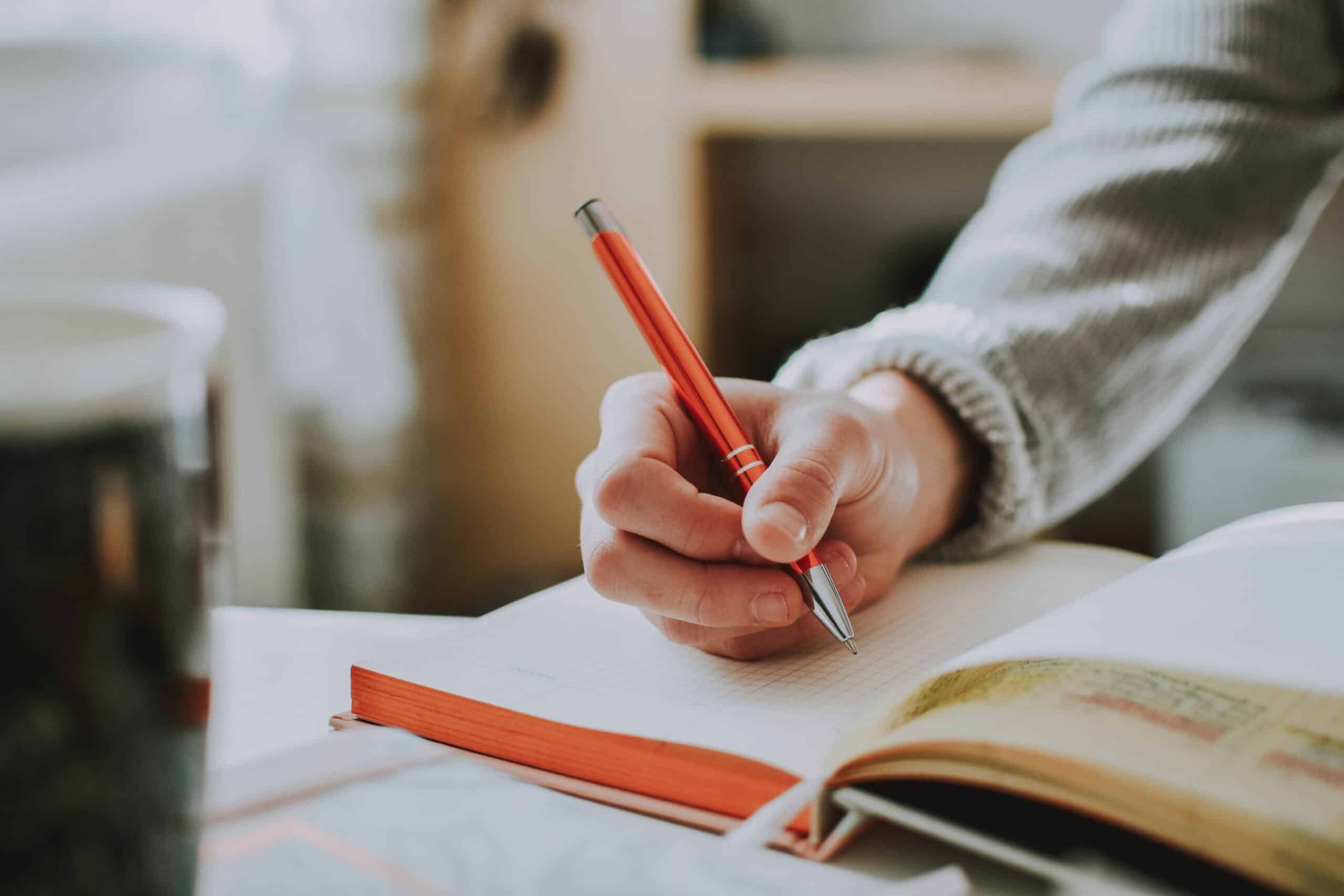If mindfulness has changed your life, it is natural to want to share it with others. Some people will share mindfulness informally with their loved ones, such as through the way they communicate. Others, however, will feel a deeper call to share mindfulness in a more traditional way: by becoming a mindfulness meditation teacher.
Yet despite a heartfelt urge to teach mindfulness meditation, nearly all new meditation teachers run into inner barriers or resistance along the way. We might not like encountering this fear, doubt, and uncertainty, but it is actually a natural and healthy sign. It is what we do with these feelings that makes all the difference.

Why Am I Afraid to Teach Mindfulness?
First, we need to address the nature of the fear itself. To begin, let’s consider the fact that fear is natural. If fear is rising, it comes for a reason (whether we are in imminent danger or not). Something causes it, but what?
Before we consider our personal reasons for feeling nervous about teaching mindfulness, it can be helpful to note the evolutionary causes of this experience. Consider this:
Expressing ourselves as a mindfulness teacher require vulnerability. It comes with certain risks, even if they are not harmful to our physical being. We risk being judged or rejected, and rejection is a fear that has evolutionary roots. We are wired for belonging because millions of years ago a solitary individual would not have been able to survive on their own. Even if rejection today would not threaten our ability to survive, it still is not a pleasant experience. In fact, social rejection activates the same brain regions that are connected to physical pain.
But fear of rejection hasn’t stopped humans from expressing themselves in new ways. It is simply something to be aware of – to be mindful of. If we are aware of our fears, we are in a much better position to overcome them.
So, we might then ask ourselves: Why am I afraid to teach mindfulness? Where is this self-doubt coming from? There are a few different reasons we might not feel confident to teach mindfulness or meditation. For instance:
Some of these fears might indicate we have more to learn, but a lot of them stem from how we relate to ourselves. Even if we do have more to learn, this is a barrier that can be overcome – and the only way to overcome it is to work through it. To learn more, to practice more, and to continually explore the next step that is possible for us.
Who can teach mindfulness?
A common question that many aspiring mindfulness meditation teachers ask is, ‘Who can teach mindfulness?’ Unlike regulated professions, there are no universal requirements to become a mindfulness meditation teacher. With that said, it is important to have established your own regular practice and receive training from a credible teacher or institution.
Learn more about how to become a certified mindfulness meditation teacher.
How to Ease Fear, Doubt, and Uncertainty
Once we are aware of our fears, doubts, and uncertainties, we can take the next steps towards uncovering how to teach meditation with greater confidence. First and foremost, it is important to note that there is no easy way through this. We grow through trial and error and it is through our fears that we uncover the humility, wisdom, and insight of a great teacher.
With that said, there are some important tips we can keep in mind to reduce our propensity to be overrun by self-doubt. Consider the following:
Embrace where you are.
First, it is important to embrace wherever you are on your journey as a mindfulness teacher. Many people wonder how to teach meditation like an expert while overlooking the gifts of where they are right now. All the best mindfulness and meditation teachers were once in a similar position as you are now. Embrace the fact that the best way to learn how to be better is to take steps in the direction you long to go in.
Cultivate self-acceptance.
Self-love and self-acceptance are crucial life skills that can support us as mindfulness teachers. For many people, it is easier to feel self-compassion for others than it is to feel that same tenderness towards ourselves. If this is the case for you, consider how you would speak to a loved one who is trying something new. Would you tell them they’re not good enough or would you support them right where they are? Offer yourself the latter.
Remember that it’s okay to make mistakes.
Furthermore, remember that mistakes can be your friend. They don’t feel good in the moment, but they are a huge contributing factor to the wisdom of our future self. It is through our mistakes that we retain humility and that we learn how best to share these profound practices with the world. If you make a mistake, consider what you can learn from this incident while bathing yourself in compassion. Take your time to reflect on it and to let it fuel your growth.

Refrain from overrepresenting yourself.
It is easier to teach mindfulness meditation with less insecurity when we are not over representing who we are or what we have to offer. If you experience self-doubt, you probably aren’t doing this anyways, but it is worth being mindful of in any case. Be upfront about how much experience you have, what you’re able to help with, and what is beyond the scope of your experience and knowledge.
Refrain from underrepresenting yourself.
On the flip side of this is the tendency to underrepresent ourselves. It is easy to get focused on all the ways that we’re not as wise, professional, or experienced as our own teachers are. However, think about how far you have come. Consider what skills you have harnessed and what it has taken for you to get to where you are today. Don’t sell yourself short.
Show your humanity.
Another important consideration that can help to ease insecurity when teaching is to show up as we are. This goes hand-in-hand with not overrepresenting ourselves. Show your humanity by being upfront about your own struggles, perhaps acknowledging any jitters you feel in regards to teaching. Allow yourself to show up as you are. As Alan Watts said:

“One feels a great deal less anxious if one feels perfectly free to be anxious.”
Connect with the humanity in others.
Furthermore, we can ease our fear of teaching by recognizing the humanity in everyone before us. We all feel anxious at times. We all doubt ourselves at times. These feelings are universal. By remembering that we are all in this together, the divide between student and teacher begins to soften. It becomes easier to get out of our own way and share the experience of mindfulness with those who have shown up for it.
Always show up prepared.
Lastly, it always helps to come prepared. Preparation can be in the form of a good night’s sleep, a written and reviewed plan, or a guided meditation script (or all of the above). Do what you need to do to make sure that you are prepared as can be. You will thank yourself when it is time to teach.
Instantly download 200 guided meditation scripts.
Addressing Pre-Session Nervousness
The above tips are important to reflect upon and to keep in mind, but sometimes our fear hits us right at the start of a session. In these moments, it can be helpful to have some practical tips to ease the stress response and evoke a state of greater ease.
Harness the power of three mindful breaths.
As mindfulness practitioners, we have without doubt experienced the power of the breath. Now is the time to use it. When pre-session nervousness creeps up, go back to the basics. Take three mindful breaths to ease any fears you are experiencing. Or, you might practice diaphragmatic breathing.
Make eye contact with your students.
Tap into your shared humanity by making eye contact with those you are teaching. This can help you drop out of your head and into your immediate experience. You might also expand your awareness to take in the world around you – perhaps the trees outside the window or the aroma in the room.
Come back to your core reason for teaching.
Teaching mindfulness is not about you. It is about the practice. Why did you want to teach mindfulness meditation in the first place? Most teachers come to the practice due to their own suffering. You can get out of your own way by remembering what this is really about for you.
Send yourself some silent love.
Lastly, turn towards the fear within and send it a warm smile. Let it know you see it and that you acknowledge it. Bless it with loving kindness and notice how it begins to shift. You do not need to judge the fear or push it away (but as a mindfulness practitioner, you already know this).

6 Mindfulness Exercises to Help With Fear and Self-Doubt
There are many ways to grow into our role as mindfulness teacher and to reflect on our personal challenges along the way. If you still have questions about how to teach mindfulness with less fear, doubt, and uncertainty, explore any number of the following practices.
This is a simple yet powerful worksheet that enhances mindful self-reflection about our fears and doubts. It can help us to identify some of the negative beliefs we hold and the unique reasons that we might be nervous to share mindfulness. It then invites us to reconnect with our intentions for teaching mindfulness.
For those that would prefer to explore the first practice while being guided, this video takes us through how to tune into our beliefs about our role as a mindfulness teacher. It asks the powerful question: Is sharing mindfulness worth the discomfort I’m feeling?
This mindfulness worksheet helps us to identify both our strengths and the areas where we can grow as a mindfulness teacher. For instance, we might come to realize that we are incredibly patient with others but that we could become more aware of and sensitive to trauma. The more we learn, the more we grow.
Another great way to address self-doubt and insecurity is to practice self-compassion. This guided meditation led by Chris Germer invites us to tune into a challenge (for instance, anxiety about teaching meditation) with greater care and kindness. This can help us to shift the way we speak and tend to ourselves when we are feeling fearful, nervous, and uncertain.
Another guided practice, Mark Coleman leads this mindfulness meditation to help mindfully navigate the inner critic. He invites us to become aware of our judgments, such as inner voices that say we’re not enough or that we should be doing something else. We are supported to rest in awareness, watching as perhaps these thoughts dissolve.
Setting an intention for each session that you teach can help you to feel more confident in what you have to share. This worksheet helps you to clarify your intention for any given lesson. One of the questions it invites you to consider is: If your students were to go home with just one lesson today, what would it be?
Lastly, if you are struggling to feel confident in your role as a mindfulness teacher, it could be because you have yet to clarify your vision. This worksheet will help you to tap into your deepest reasons for teaching mindfulness, which can inspire you to continue on with this journey.
Learn more about how to certify to become a mindfulness meditation teacher.


















